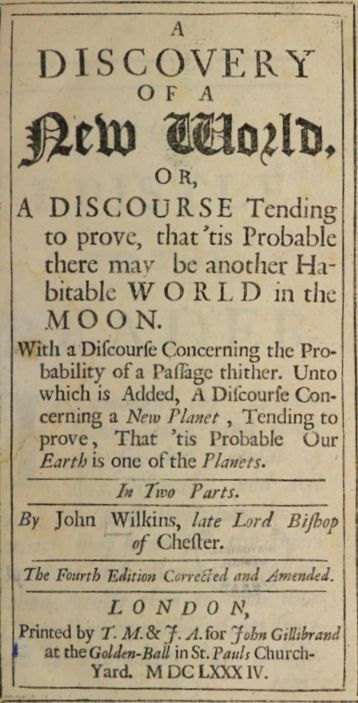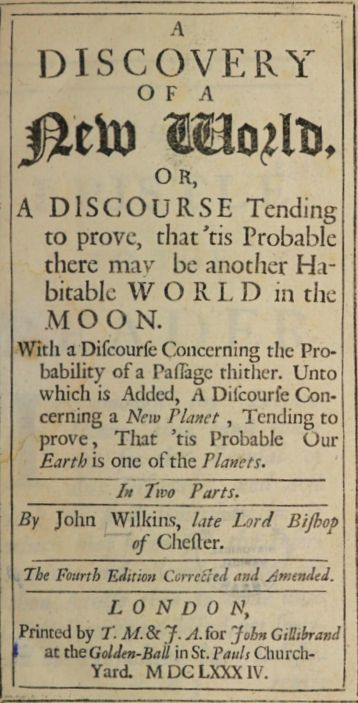Journey to where outer space begins
DOI: 10.1063/PT.3.4670
Jonathan McDowell’s Quick Study “Where does outer space begin?” (Physics Today, October 2020, page 70

Title page from A Discovery of a New World, or A Discourse Tending to Prove, that ’Tis Probable There May Be Another Habitable World in the Moon …, 4th ed., by John Wilkins, 1684. (Public Domain Mark 1.0.)

As I recount in reference , in 1684 John Wilkins, an English clergyman and cofounder of the Royal Society, imagined that the Moon might be inhabited. 2 Although Wilkins recognized that the upper air was cold and thin and that there would be no inns en route to offer victuals and shelter, he affirmed that it might be “possible to make a Flying Chariot. In which a Man may sit, and give such a Motion unto it, as shall convey him through the Air. And this perhaps might be made large enough to carry divers Men at the same time” (page 184). He went on to make the remarkable prediction “That supposing a Man could Fly, or by any other means, raise himself Twenty miles upwards, or thereabouts, it were possible for him to come unto the Moon” (page 162).
Three centuries later those two benchmarks were met, only a few years apart. No human reached an altitude of 32 km (20 miles) until the Bell X-2 rocket plane hit 38.5 km in 1956, just 13 years before Apollo 11 took men to the Moon. And although ballooning began long before heavier-than-air aviation, the 32 km threshold was not breached until the Stratolab High V balloon did so in 1961, shortly after Joseph Kittinger Jr’s famous parachute jump of 31 km from the US Air Force’s Excelsior III balloon in August 1960.
In space exploration, as in so many other long journeys, the first 20 miles are the hardest.
References
1. R. D. Lorenz, Exploring Planetary Climate: A History of Scientific Discovery on Earth, Mars, Venus and Titan, Cambridge U. Press (2019).
2. J. Wilkins, A Discovery of a New World, or A Discourse Tending to Prove, that ’Tis Probable There May Be Another Habitable World in the Moon . . ., 4th ed. (1684), book 1.
More about the Authors
Ralph D. Lorenz. (ralph.lorenz@jhuapl.edu) Johns Hopkins Applied Physics Laboratory, Laurel, Maryland.
